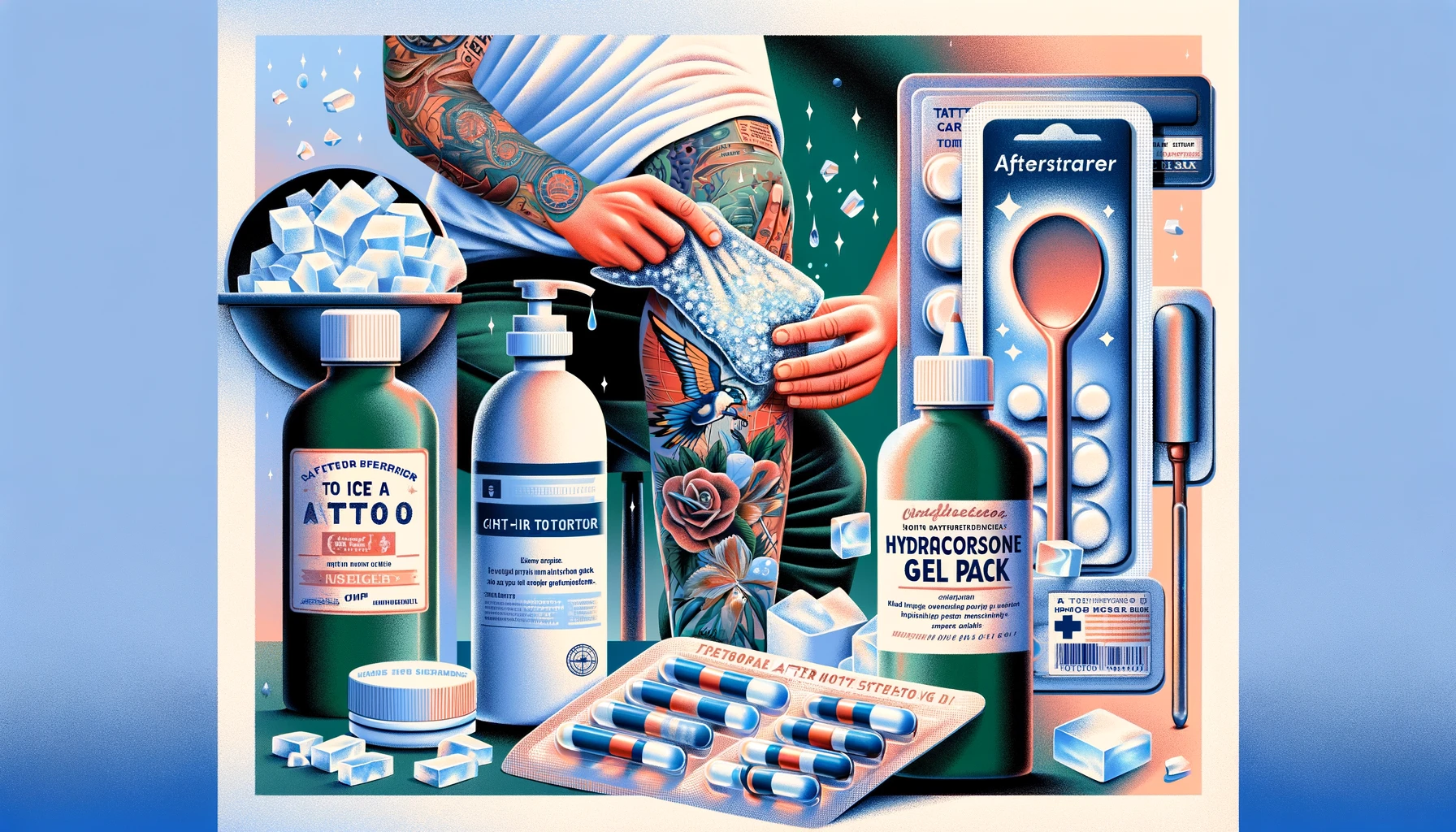Whenever you think of having a tattoo, the first thing that comes to mind is the pain of the process. Yes, we all love to see the vibrant artwork on your body, but the aftercare and healing process (besides the inkwork process) can be tough.
But let me give you a magical remedy to reduce the pain of a tattoo—the Ice packs. You can use ice to soothe and care for a freshly inked tattoo.
Icing can relieve pain and swelling, promote healing, and help maintain the vibrant appearance of the tattoo. So, let’s talk about icing the tattoo!
| Publisher | Alex Martin |
|---|---|
| Focus | Ice a Tattoo |
| Category | Tattoo aftercare routine |
| Article Type | Informative Guides, Tips & Advice |
| Update Frequency | Monthly to reflect new insights and trends |
Icing Your Tattoo–Why Should You Do It?

Icing a tattoo is a good idea, and it can relieve pain and discomfort. If you are considering an ice pack over a tattoo, here is why you should do it:
No Swelling
Whenever you see a swelling on your body it means your body has gone through a trauma. But why welling? Your brain sends fluids and white blood cells to heal that region.
Although these white blood cells are vital for recovery, they entail pain and swelling. If you put ice on the traumatic area (where you got the tattoo), it will block the blood vessels. And when your brain sends extra fluid, it will not accumulate around the region. So you get little to no swelling if you put in an ice pack.
Faster Healing
It might surprise you, but icing can make your tattoo heal faster. Although it does not directly do it, there are ways to heal faster. So, when you get swelling on the skin due to tattoos, it becomes difficult for the body to absorb nutrients.
So, due to swelling, you hinder the healing process. However, applying ice packs relieves swelling, which can hasten the healing process by transporting more nutrients.
Pain Relief
The ice pack can also help relieve the pain that comes with tattoos. Cold compresses can numb the area, and you get instant pain relief. Moreover, the ice pack also hinders the blood vessels for pain relief.
No Tattoo Weeping
It is normal to see white fluid accumulation around the tattoo. It is good for healing. But if you see a lot of white fluid accumulation also called tattoo weeping, it can be bad.
Why? Because it makes tattoo recovery take a long time. Also, you will encounter excessive scabbing. Since ice packs can hinder the blood vessels, you can minimize this fluid accumulation around the tattoo.
No itching
Itching is your ground reality with the tattoos. When your tattoo starts healing, it can begin to itch, so the best you can do is wrap ice in a towel or get a frozen peas bag and apply it on the region. You get instant relief from itching.
Less Bruising
Since inkwork pierces your skin millions of times, it ruptures the blood vessels under the skin. When these vessels rupture, they cause bruising. But if you apply an ice pack, it minimizes the blood flow in these ruptured vessels, which makes for minimum bruising.
Vibrant Tattoo
The ice packs can also make your tattoo vibrant. How? The cold from the ice will close the pores and lock the ink in, which makes your tattoo more vibrant. Moreover, you can forget the area’s heat as your skin temperature drops.
Icing Your tattoo–Why Should You Not Do it?

Yes, icing a tattoo certainly helps, but you can ruin it if you don’t do it properly. So here is why you should not apply ice on a tattoo:
Slow Healing
When you apply ice directly to a tattoo for extended durations, it blocks the blood vessels. And when the blood vessels are blocked, it slows down the healing process, and in the worst case, you get frostbite.
Infections
When you apply a DIY cold press on your fresh tattoo, chances are it can get infections. Since a new tattoo is an open wound, it can get infected if you introduce it to contaminants.
But we all agree that ice packs are a relief for tattoo enthusiasts, so let us tell you the correct way to apply ice to a tattoo.
How To Apply Ice on A New Tattoo Safely?
First and foremost, ask your artist about the ice application on a tattoo. Another important thing is that you must avoid applying ice directly to the tattoo at all costs. Grabbing a few cubes and placing them on the tattoo is not a good idea. Many individuals prefer applying clean, cold cloth on a tattoo instead of ice. Moreover, many choose to follow the rule of K.I.S.S–keep it simple and stupid. But you can also apply a cold compress.
So, to apply ice on a tattoo, you need a clean wash and ice cubes.
First of all, wash your hands to minimize the chances of infection. Now, put the ice cubes in a plastic bag or ziplock bag. As mentioned above, you can use a cold, damp cloth if you don’t want to apply ice. Soak the washcloth in water, keep it in the freezer for half an hour, and wrap it around the tattoo.
But if you are going with the ice cube, get a wet, clean washcloth and put it on the ice bag. Your cold compress is ready. Remember to use a damp cloth; otherwise, the dry cloth can stick to fluids on the tattoo.
Since your cold compress is ready, you can keep it on your tattoo. Leave the cold compress for around 20 minutes to avoid over-icing. If you see the tattoo swelling, apply it every two hours. And remember to change the position of the cold compress; keeping it in one place is made for stingy sensations.
After you have applied enough cold compresses, you should pat dry the tattoo. Don’t wipe it with a harsh hand, as you can develop infections. After applying the cold compress, you can do the aftercare routine.
What are the Other Alternatives to Ice Tattoos?

There are several aftercare products that you can use to relieve pain and inflammation, such as:
- Ibuprofen can help you protect against infection and relieve pain. Moreover, it can work for swelling as well. It works as an over-the-counter pain reliever.
- If you don’t want medicine, you can go for topical products. The ointment with hydrocortisone in it can be good as it can relieve burning sensation and soothe itchiness. Even if you apply ice packs, it is good to have an ointment in hand for faster healing.
- If your tattoo primarily finds relief through cooling, the optimal solution involves using refrigerated gel packs. These hygienic products provide a cooling effect and help minimize the risk of infections associated with the tattoo healing process.
Conclusion
Generally, icing can be good for your tattoo; however, apply it if necessary. Moreover, you should not directly apply ice but use a cold compress instead. It can numb the area and relieve pain and swelling.



